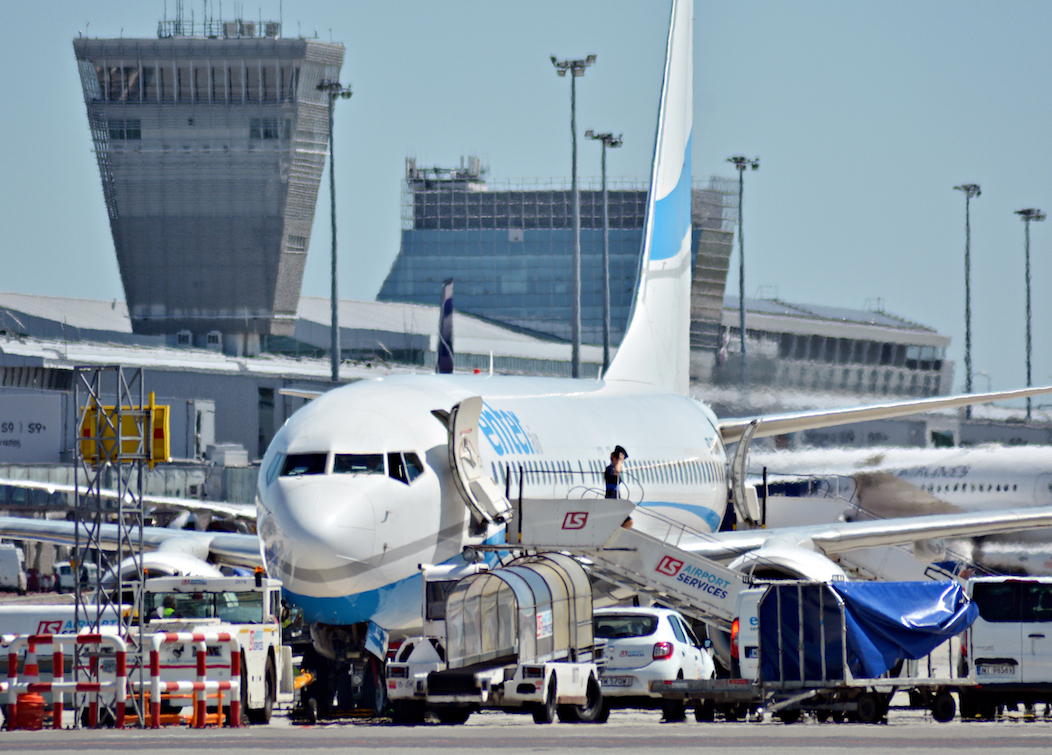MONITORING EXTERNAL SERVICE PROVIDERS
INTRODUCTION
An aircraft operator has a responsibility to ensure that contracted services are conducted in a manner that meets its own operational safety and security requirements. Therefore a contract or agreement shall be established with all external service providers (including the parent or an affiliate organization) that conduct outsourced services for the operator. This contract should be also used as a basic document for all further monitoring and auditing activities.
A contract or agreement is necessary to ensure that all outsourced services performed by the external service provider are clearly explained and formally documented.
It not only sets forth the description of services the provider is expected to perform, but shall also define the application of specific performance indicators and targets (i.e. measurable values) that will be monitored by the operator. These measurable items specified in the contract (e.g. Service Level Agreement SLA or Joint Procedure Manual JPM) together with operator's controlled documents (e.g. Aircraft Handling Manual AHM), typically provide the basis for a monitoring process.
To ensure an effective monitoring process a range of internal and external methods might be used in the oversight of external service providers. Methods might include auditing, systematic review and risk assessment of reported hazards and/or occurrences, monitoring of performance output (e.g. Key Performance Indicators KPIs), reporting and governance processes, monitoring and analysis of targeted risk areas, as well as the establishment of an effective two-way communication link with the service provider. Joint Procedure Manual JPM mentioned above is considered as good industry practice.
There are some differences between monitoring certified external service providers (e.g. Part-145 Maintenance Organisations), uncertified external service providers (e.g. Ground Handling Agents) and external service providers working under the Operator’s Quality System (e.g. organisations performing some Continuing Airworthiness Task for Operator), but in all cases contract or agreement is the basis for monitoring and auditing. IOSA or ISAGO registration is a way for an external service provider to demonstrate fulfillment of requirements that affect the safety and/or security of operations and would be acceptable as a method of monitoring when such registration is used in conjunction with a risk assessment of the provider.
AUDIT ITEMS LIST
Certified external service providers (e.g. Part-145 AMO Approved Maintenance Organisation, Part- 147 AMTO Approved Maintenance Training Organisation and Air Crew ATO Approved Training Organisation)
These service providers are certified according to the applicable regulation and oversighted by the applicable National Aviation Authority NAA. Basic intention of this certifications schema is that aircraft operators can consider external service providers having appropriate certificate is in compliance with applicable regulation without any additional checking. (However, in real life not every National Aviation Authority shares this opinion).
But in any case, checking important safety and airworthiness related regulatory and/or standard requirements shall be included in the Audit Items List of your contract or agreement. To clarify, Audit Item List should be structured i.a.w. contract or agreement. It is very helpful if regulation or standard defines contract or agreement structure (e.g. by Appendix XI to AMC M.A.708(c) for maintenance contracts) as this might be used also as structure of Audit Item List. However, I would suggest you check what is really important to you also by your audit. This can be done by including safety critical regulatory or standard requirements into most suitable Audit Items from the List.
Uncertified external service providers (most of airport Ground Service Provider, e.g. GHA Ground Handling Agent falls in this category).
For these service providers there are no mandatory regulations or certifications. Some providers might be ISAGO registered and actually this is the only certificate you can take into account for monitoring/auditing uncertified service providers. However, it is a good industry practice to take the ISAGO standard as the basis for your own Audit Item List. Joining industry pools for monitoring / auditing Fuel and De/Anti-icing providers might be a wise solution.
External service providers working under operator’s responsibility (e.g. organisations performing Continuing Airworthiness Task for Operator)
These external service providers actually perform work for which the operator is responsible in front of the related National Aviation Authority. Because of this, monitoring and auditing external service providers working under operator's responsibility is even more important. Due to importance for safe and airworthy operation, EU regulation defines contract or agreement structure for subcontracting continuing airworthiness management tasks by Appendix II to AMC M.A.711(a)(3) and it is a good industry practice to include these requirements in your contract Audit Item List.
Be aware that sometimes you would have less work if you perform Continuing Airworthiness Tasks by yourself than subcontracting and continuously monitoring external service providers compliance with regulatory requirements. So, think twice before you outsource Continuing Airworthiness Tasks.
CONCLUSION
Customer is King! Partnership with external service providers should be clearly visible from the contract or agreement and related documents. However be aware of possible company culture differences. Even thousands of contract pages would not prevent operational problems in case of big company cultural differences, e.g. operators focused on customer satisfaction may expect frequent operational problems originated from maintenance service providers focused only on profit (usually proudly declared by themselves as lean).
On the other side, not many pages are needed to define partnership with external service providers which share the same values, therefore think well before you sign the contract, and don’t let only top level management and financial staff decide who is the appropriate external service provider. Your operational staff and your customers would appreciate this!
And don’t forget, contract or agreement based audit shall take a look on both contractual sides, as every side has some contractual obligations needed to be continuously fulfilled to make possible the required level of service to be provided by the external service provider.
Andrej Petelin
Aviation Safety and Compliance ConsultantJune, 2020
